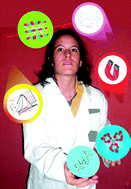In this critical review, it is shown how the introduction of chirality and the control of the absolute configurations of chiral elements in molecular magnets allow obtaining enantiopure chiral magnets (ECM), an archetype of multifunctional materials. This task has been recognised as a major challenge for both chemists and physicists of molecular magnetism. To reach this goal, the former have combined the rational approaches towards molecular-based magnets and of enantiopure metal–organic frameworks. They have used enantiopure stable radicals, ligands from the chiral pool, enantiopure coligands associated with achiral connectors or enantioselective self-assembly to successfully reach their synthetic targets. They were motivated by the will to obtain suitable systems for the experimental demonstration of the influence of enantiomeric purity on the physico-chemical properties. This influence can be found in the magnetic properties themselves but, most interestingly, in the coexistence and interaction between the properties arising from controlled non-centrosymmetry. Thus the combination of natural circular dichroism, second harmonic generation or ferroelectricity with long-range magnetic ordering can give birth to new properties like magneto-chiral dichroism, magnetisation induced second harmonic generation or multiferroicity. The two former synergetic effects have already been demonstrated in enantiopure chiral magnets. The third one remains a challenging target that can be reached by adapting strategies developed towards enantiopure molecular ferroelectrics (119 references).

You have access to this article
 Please wait while we load your content...
Something went wrong. Try again?
Please wait while we load your content...
Something went wrong. Try again?


 Please wait while we load your content...
Please wait while we load your content...